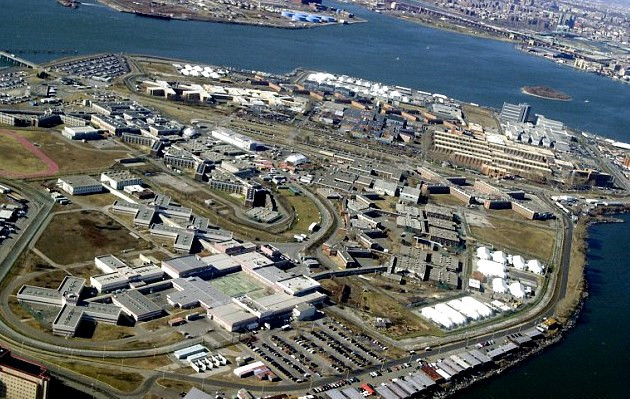來(lái)源于《美國(guó)》版塊
Burying the poor
埋葬窮人
Potters’ fields
伯德菲爾德公園
What happens to the corpses of those who die poor or unclaimed in NYC
那些死在紐約的窮人還有無(wú)人認(rèn)領(lǐng)者的尸體怎樣處理
“No one who sleeps there had a dollar to their name in life…the bodies interred here are as utterly forgotten and wiped away as if they never existed.” This is how the New York Herald described Hart Island in 1874, five years after the city began burying its poor on the island off the Bronx. A century and a half later the poor and unclaimed are still buried in pine coffins, usually marked only with numbers, not names. These are stacked three deep in a trench, three feet below the surface. Each trench holds 150 adult coffins. Roughly 1,200 people are buried there each year.
“那些睡在那里的人,生命中沒有一美元是屬于他們的……埋葬在這里的尸體,就像從未存在過(guò)一樣,被徹底遺忘和抹去。” 這是1874年《紐約先驅(qū)報(bào)》對(duì)哈特島的描述。自1874年,紐約已經(jīng)連續(xù)五年將窮人埋葬在布朗克斯附近的哈特島。一個(gè)半世紀(jì)后,窮人和無(wú)人認(rèn)領(lǐng)的人仍然被埋在松木棺材里,通常只有數(shù)字,沒有名字。棺材堆放在一個(gè)深3英尺的溝里,在地表下3英尺。每條溝可容納150具成人棺材。每年大約有1200人被埋在那里。

Jurisdictions across America are wrestling with what to do with their unclaimed dead. A state fund in West Virginia, which has been hit hard by opioid overdoses, ran out of money to bury the unclaimed dead last year. Some cities, including Los Angeles, cremate the unclaimed after a certain period, which is cheaper than burial. In North Carolina unclaimed bodies are cremated, then stored for three years before being scattered at sea. In Washington’s King County, which includes Seattle and its suburbs, the poor and the unclaimed are cremated and stored until a biennial burial ceremony. Because of the high number of migrant deaths in Pima County in Tucson, Arizona, its medical examiner’s office handles more unidentified remains relative to population than any office in America.
美國(guó)各地的司法管轄區(qū)都在為如何處理無(wú)人認(rèn)領(lǐng)的死者而絞盡腦汁。西維吉尼亞州的一個(gè)州基金因阿片類藥物過(guò)量而遭受重創(chuàng),去年用于埋葬無(wú)人認(rèn)領(lǐng)死者的資金告罄。包括洛杉磯在內(nèi)的一些城市,在一段時(shí)間后將無(wú)人認(rèn)領(lǐng)的人火化,這比埋葬更便宜。在北卡羅萊納,無(wú)人認(rèn)領(lǐng)的尸體被火化,骨灰保存3年,然后散在海上。在華盛頓的國(guó)王縣,包括西雅圖及其郊區(qū),窮人和無(wú)人認(rèn)領(lǐng)的人死后火化并保存起來(lái),兩年舉行一次葬禮。由于亞利桑那州圖森市皮馬縣移民的高死亡率,其法醫(yī)辦公室處理的身份不明的遺體與人口的比例超過(guò)了美國(guó)任何一個(gè)法醫(yī)辦公室。
Those who die without the means to pay for a funeral, which costs nearly $9,000 on average, end up on Hart Island. Nearly two-thirds had next of kin who opted for a public burial. In all about 1m people lie there. The earliest victims of aids were buried there in 1985, far away from the other graves. Hart Island may be the largest cemetery for victims of the epidemic. During heavy rains bones are sometimes washed away and end up on nearby beaches.
一個(gè)葬禮平均花費(fèi)近9000美元,那些死后無(wú)力支付葬禮費(fèi)用的人,最終埋在哈特島。近三分之二的死者近親選擇了公開安葬。大約有100萬(wàn)人死后葬在那里。最早的艾滋病患者于1985年被埋葬在那里,遠(yuǎn)離其他墳?zāi)埂9貚u可能是這個(gè)流行病受害者的最大墓地。骨頭有時(shí)會(huì)被大雨沖走,最后留在附近的海灘上。
The island, which has a stark beauty, is under the jurisdiction of the city’s Department of Corrections. Four days a week eight inmates from Rikers, New York’s biggest jail, travel to the island to dig graves and lower coffins into them. They are paid a $1 an hour.
這座島嶼有一種荒涼的美,隸屬于該市的勞改部門。紐約最大的監(jiān)獄賴克斯島監(jiān)獄每周有4天的時(shí)間安排8名犯人到島上挖墳?zāi)梗⒐撞姆胚M(jìn)去。他們的工資是每小時(shí)1美元。
Because of Hart Island’s close connection with jail and prisoners, it is difficult for relatives (or anyone else) to visit. “It is clear to me we can do better, much better for the people buried on Hart Island,” says Corey Johnson, the Speaker of the city council. “This needs to be changed immediately.” He is backing a bill that would transfer operations to the Parks Department, create an office to help those who need help with a burial and make travel to the island easier. The city also needs to think about what to do when Hart Island is full. The Department of Corrections says there will only be space for eight or ten more years.
由于哈特島與監(jiān)獄和囚犯關(guān)系密切,埋葬者親屬(或其他人)很難去探望。“我很清楚我們可以做得更好,為埋在哈特島上的人們做得更好,”市議會(huì)議長(zhǎng)科里·約翰遜表示。“這需要立即改變。”他支持一項(xiàng)法案,該法案將把埋葬工作轉(zhuǎn)移到公園管理部門,并設(shè)立辦公室來(lái)幫助那些需要幫助埋葬的人,并使去往該島更容易。紐約還需要考慮哈特島葬滿時(shí)該怎么辦。勞教部門表示,這里的空間只夠再使用八年或十年。
譯文由可可原創(chuàng),僅供學(xué)習(xí)交流使用,未經(jīng)許可請(qǐng)勿轉(zhuǎn)載。












